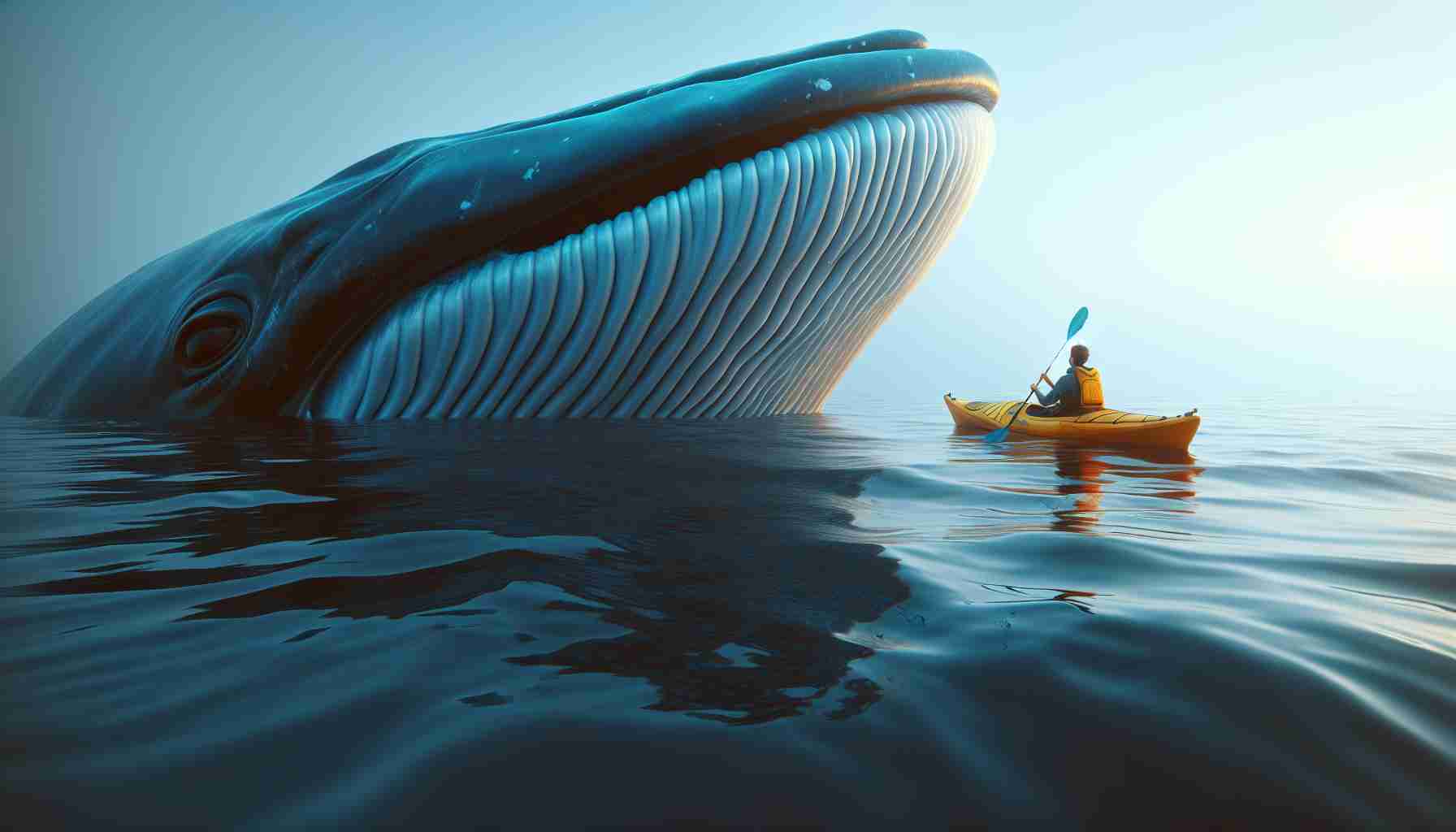- Adrián Simancas, a 24-year-old Venezuelan adventurer, experienced a dramatic encounter with a humpback whale while kayaking in the Magellan Strait in Chile.
- The whale briefly enveloped Adrián and his kayak in its mouth before releasing them unharmed, leaving Adrián slightly bewildered but safe.
- Footage shows Adrián’s father maintaining calm during the incident, emphasizing composure amidst the unfolding chaos.
- Adrián describes the encounter vividly, marked by the sensation of being struck by living flesh and surrounded by blue and white hues.
- The encounter highlights the mysterious nature of whales, which are generally non-threatening to humans as they primarily feed on krill and small fish.
- Adrián and his father plan to continue their ocean adventures, pledging to be more cautious in the future.
- The story underscores the unpredictability and beauty of marine life in our world’s wilderness.
A glacial afternoon upon the vast waters of the Magellan Strait in Chile turned into an incredible tale of survival. Adrián Simancas, a 24-year-old Venezuelan adventurer, paddled alongside his father in a bright yellow kayak, his silhouette stark against the frigid, wind-swept waves. Without warning, an imposing shadow rose from the depths—a humpback whale, its enigma and enormity unfolding in an instant.
The majestic creature, in a curious encounter that transcended chance, closed its immense jaws around Adrián. For a heartbeat, he vanished into the belly of the sea, kayak and all. Then, with a surge of the unknowable, the whale released him back to the world, leaving him slightly bewildered but unharmed.
Footage of the extraordinary event reveals Adrián’s father urging calm with a voice that cuts through the crash of the surf. “Stay calm,” he instructs, his presence a beacon amidst the chaos. Adrián, recovering from his bewilderment, swims towards safety, untouched by injury.
Reliving the moment, Adrián describes the sensation of being struck from behind—not by a wave, but by living flesh, an experience marked by startling hues of blue and white. He emerged with a story that echoes myth and legend, his joy reflected in a smile unmarred by his adventure.
Reminiscent of other close calls, the astounding nature of Adrián’s encounter reminds us that the world of whales remains vast and mysterious. As fascinating as these giants are, experts assure that they pose little threat to humans, their diets confined to krill and small fish.
Adrián and his father are undeterred, vowing to return to the ocean’s embrace, with a pledge to exercise more caution. In a place where nature writes its own narratives, their story is a testament to the unpredictable beauty and awe of our world’s remaining wilderness.
The Amazing Tale of Survival: What to Learn From Whales and Kayaking
How-To Steps & Life Hacks: Surviving a Close Call with a Whale
If you find yourself in a similar situation while kayaking or engaging in marine activities, these steps could be crucial:
1. Stay Calm: It’s easier said than done, but maintaining composure helps you think clearly in unexpected situations.
2. Wear a Life Vest: Always wear a life vest for added safety if you’re thrown into the water.
3. Alert Others: If you have a whistle or waterproof communication device, use it to signal for help.
4. Avoid Panic Swimming: If the whale surfaces near you, remain calm; thrashing or trying to quickly swim away can attract more attention.
5. Observe Whale Watching Guidelines: Guidelines often state maintaining a respectful distance from wildlife.
Real-World Use Cases: Eco-tourism and Whale Watching
Adrián’s story underscores the allure of eco-tourism and whale-watching experiences. The Magellan Strait is a popular destination due to its diverse marine life, including humpback whales. These organisms are largely non-aggressive, making them suitable candidates for ecotourism adventures that focus on observation rather than interaction.
Market Forecasts & Industry Trends
According to MarketWatch, the global whale watching industry is projected to grow due to increased interest in wildlife tourism and environmental consciousness. More tourists seek out close encounters with nature, pushing for sustainable models and guidelines for these activities.
Reviews & Comparisons: Kayak Types for Sea Adventures
Not all kayaks are created equal. When venturing into the sea, opt for ocean kayaks, which are longer, more buoyant, and stable compared to their river counterparts. Brands like Perception Kayaks and Wilderness Systems offer models specifically designed for sea paddling.
Controversies & Limitations
Despite their mysterious beauty, interacting closely with wild whales can present ethical and safety challenges. Conservationists argue that these encounters should happen on the whale’s terms, promoting distance to avoid disrupting natural behavior.
Features, Specs & Pricing: Ocean Kayaks
– Length: 12-16 feet
– Weight Capacity: 250-450 pounds
– Material: Polyethylene, fiberglass, or composite
– Price Range: $800 to $2500
Security & Sustainability
Manufacturers are increasingly focusing on eco-friendly materials and practices in kayak production. Utilizing recycled plastics and creating designs that minimize water disturbance contribute to sustainable recreational practices.
Insights & Predictions
Experts predict the trend towards autonomous wildlife tourism, which mitigates human interference while providing education on marine life. Virtual experiences could also become more prominent, reducing environmental impact.
Tutorials & Compatibility
Many online platforms offer tutorials on kayaking skills and marine safety. Websites like Kayakpaddling.net provide comprehensive guides and community-driven advice.
Pros & Cons Overview: Kayaking with Marine Wildlife
Pros:
– Unique, unforgettable wildlife encounters.
– Promotes physical fitness and a connection to nature.
Cons:
– Potential safety risks if not well-prepared.
– Environmental concerns from human activities.
Conclusion: Actionable Recommendations
– Always Research: Before embarking on a marine adventure, familiarize yourself with the local wildlife and guidelines.
– Invest in Quality Gear: Ensure you have suitable equipment designed for the conditions you’ll face.
– Participate in Workshops: Engage in kayaking or marine safety workshops for practical exposure and skill-building.
For more information on kayaking and marine safety, visit Paddling, a reliable resource for kayaking enthusiasts.
